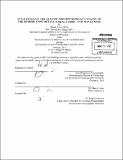| dc.contributor.advisor | . | en_US |
| dc.contributor.author | Noble, Abigail Emery | en_US |
| dc.contributor.other | Woods Hole Oceanographic Institution. | en_US |
| dc.coverage.spatial | n-us-hi t------ r------ | en_US |
| dc.date.accessioned | 2012-05-15T21:11:47Z | |
| dc.date.available | 2012-05-15T21:11:47Z | |
| dc.date.copyright | 2012 | en_US |
| dc.date.issued | 2012 | en_US |
| dc.identifier.uri | http://hdl.handle.net/1721.1/70779 | |
| dc.description | Thesis (Ph. D.)--Joint Program in Oceanography (Massachusetts Institute of Technology, Dept. of Earth, Atmospheric, and Planetary Sciences; and the Woods Hole Oceanographic Institution), 2012. | en_US |
| dc.description | Cataloged from PDF version of thesis. | en_US |
| dc.description | Includes bibliographical references. | en_US |
| dc.description.abstract | Trace metal cycling is one of many processes that influence ocean ecosystem dynamics. Cobalt, iron, and manganese are redox active trace metal micro-nutrients with oceanic distributions that are influenced by both biological and abiotic sources and sinks. Their open ocean concentrations range from picomolar to nanomolar, and their bioavailabilities can impact primary production. Understanding the biogeochemical cycling of these hybrid-type metals with an emphasis on cobalt was the focus of this thesis. This was accomplished by determining the dissolved distributions of these metals in oceanic regions that were characterized by different dominant biogeochemistries. A large subsurface plume of dissolved cobalt, iron, and manganese was found in the Eastern South Atlantic. The cause of this plume is a combination of reductive dissolution in coastal sediments, wind-driven upwelling, advection, biological uptake, and remineralization. Additional processes that are discussed as sources of metals to the regions studied during this thesis include isopycnal uplift within cold-core eddies (Hawaii), ice melt (McMurdo Sound, Antarctica), riverine input (Arctic Ocean), and winter mixing (McMurdo Sound). The biological influence on surface ocean distributions of cobalt was apparent by the observation of linear relationships between cobalt and phosphate in mid to low latitudes. The cobalt:phosphate ratios derived from these correlations changed over orders of magnitude, revealing dynamic variability in the utilization, demand, and sources of this micronutrient. Speciation studies suggest that there may be two classes of cobalt binding ligands, and that organic complexation plays an important role in preventing scavenging of cobalt in the ocean. These datasets provided a basis for comparing the biogeochemical cycles of cobalt, iron, and manganese in three oceanic regimes (Hawaii, South Atlantic, McMurdo Sound). The relative rates of scavenging for these metals show environmental variability: in the South Atlantic, cobalt, iron, and manganese were scavenged at very different rates, but in the Ross Sea, mixing and circulation over the shallow sea was fast, scavenging played a minor role, and the cycles of all three metals were coupled. Studying the distributions of these metals in biogeochemically distinct regions is a step toward a better understanding of their oceanic cycles. | en_US |
| dc.description.statementofresponsibility | by Abigail Emery Noble. | en_US |
| dc.format.extent | 296 p. | en_US |
| dc.language.iso | eng | en_US |
| dc.publisher | Massachusetts Institute of Technology | en_US |
| dc.rights | M.I.T. theses are protected by
copyright. They may be viewed from this source for any purpose, but
reproduction or distribution in any format is prohibited without written
permission. See provided URL for inquiries about permission. | en_US |
| dc.rights.uri | http://dspace.mit.edu/handle/1721.1/7582 | en_US |
| dc.subject | Joint Program in Oceanography. | en_US |
| dc.subject | Earth, Atmospheric, and Planetary Sciences. | en_US |
| dc.subject | Woods Hole Oceanographic Institution. | en_US |
| dc.subject.lcsh | Nutrient cycles | en_US |
| dc.subject.lcsh | Ocean circulation | en_US |
| dc.title | Influences on the oceanic biogeochemical cycling of the hybrid-type metals, cobalt, iron, and manganese | en_US |
| dc.type | Thesis | en_US |
| dc.description.degree | Ph.D. | en_US |
| dc.contributor.department | Joint Program in Oceanography | en_US |
| dc.contributor.department | Woods Hole Oceanographic Institution | en_US |
| dc.contributor.department | Massachusetts Institute of Technology. Department of Earth, Atmospheric, and Planetary Sciences | |
| dc.identifier.oclc | 792737718 | en_US |
